WORLD TRAVEL NEWS ARTICLE
FRANCE
'A 21st Century Medieval Castle'
This article was first published in 2011 but, on Tuesday this week the British Broadcasting Corporation (BBC) is showing a 5 part series on BBC 2 entitled 'Secrets of the Castle'. It is showing at 21.00hrs local.
A dozen more years and a dream will come true for Michael Guyot. In 1997 he embarked on building Guédelon, a small medieval castle in western Burgundy. John Harrison went to learn about medieval building techniques.
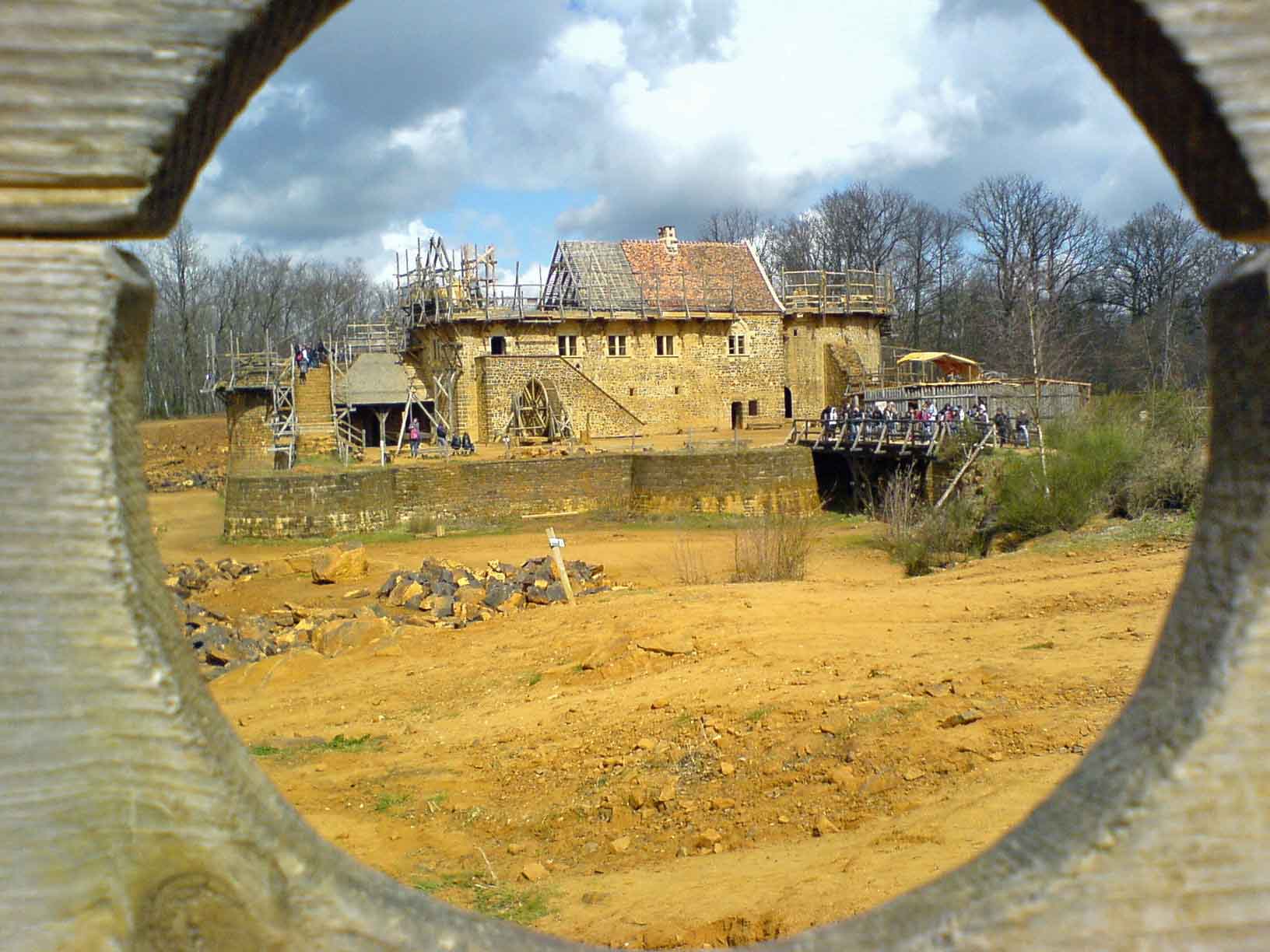
Guédelon
Already the owner of the chateau in the small town of St-Fargeau nearby, Michael Guyot had the idea of creating another from scratch. Furthermore - the unique and difficult bit - only medieval methods, materials and tools would be used.
Enlisting the help of Maryline Martin, a local businesswoman, who is now in day-to-day charge of the project, he found an abandoned quarry nearby and managed to get planning permission to build Guédelon (www.guedelon.fr ) on it.

Guédelon
Now well into the project they expect to attract over a quarter of a million visitors during the summer season. Visitors have been welcome right from the start as one of the Michael Guyot’s main aims is to encourage people to take an interest in medieval building techniques and so better understand the period. Now the visitors are also the sole source of its funding.
With the walls up to first-floor level and part of the roof completed, the building has certainly reached an exciting stage.

Roof under construction
During my visit in 2010, Hein Koenen, one of the guides, explained that extensive research with historians and archaeologists had gone into the castle’s design before the first stone was laid.
"The aim is to create an authentic small feudal chateau typical of this part of France. The home of a well-off family and their servants, it would house around 30 people. So it has a square inner courtyard with a tower at each corner. The rooms include a great hall, chapel and large kitchen, each with one-metre thick walls.
"The outside walls are 3.6 metres thick with a dry moat around them filled with brambles, nettles, holes and spikes to deter attackers".
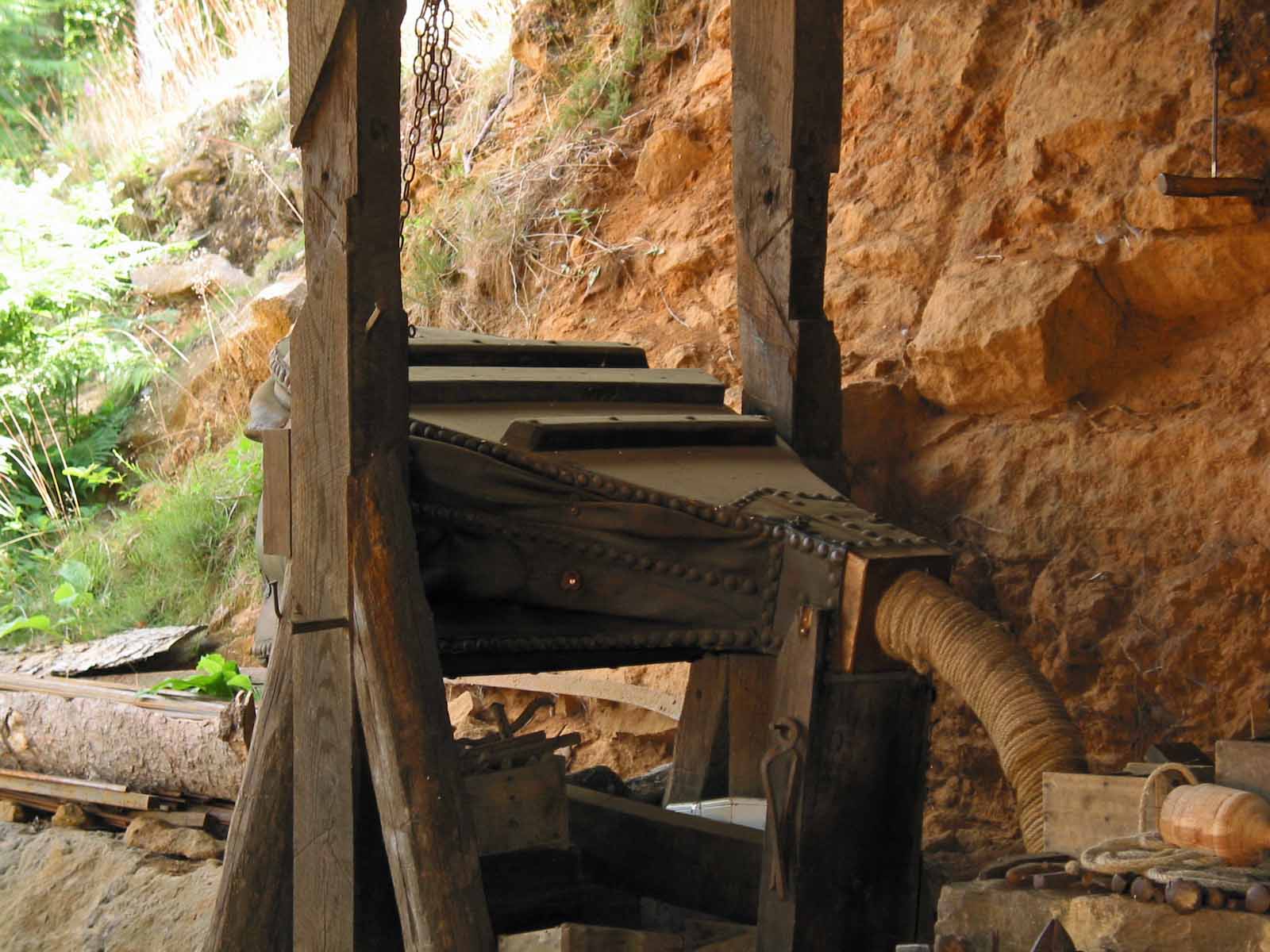
The forge bellows
On the day I was there, groups of schoolchildren where excitedly streaming onto the site, not only to see the castle taking shape but also to watch the blacksmiths, stone cutters, carpenters, tilers and rope-makers hard at work.
Everything is done in the same way as it would have been in the 13th century. Stones are cut and carved, roof tiles moulded from local clay and laid out to dry and massive beams shaped with choppers - not saws.
Before any building work could begin, all the tools - axes, hammers, choppers, chisels and even nails - were made specially. Now of course replacements are needed all the time.

An example of the hand made nails
As Hein explained to me, a few compromises have been unavoidable. They have to buy in iron for the tools as it is impractical to try to produce their own. And they use slaked lime instead of quicklime which is now considered too dangerous to handle.
Everyone wears simple medieval clothes - tunics over baggy trousers for the men or bonnets and shapeless dresses for the women. But 21st-century health and safety regulations require modern safety-cap boots.
There was also a struggle to get permission to use wooden rather than metal scaffolding. This was eventually granted on condition that it was held together with modern nuts and bolts rather than wooden pins.

Part of the vaulted roof
They also have to use modern rope for lifting heavy materials though the hoist is powered by ‘squirrel cages’, simple treadmills operated by two people - not a popular job!
Altogether about 35 craftsmen and builders are employed on the site, helped by three carthorses and supplemented by apprentices and volunteers who spend a few days helping. There is also a small team of guides.
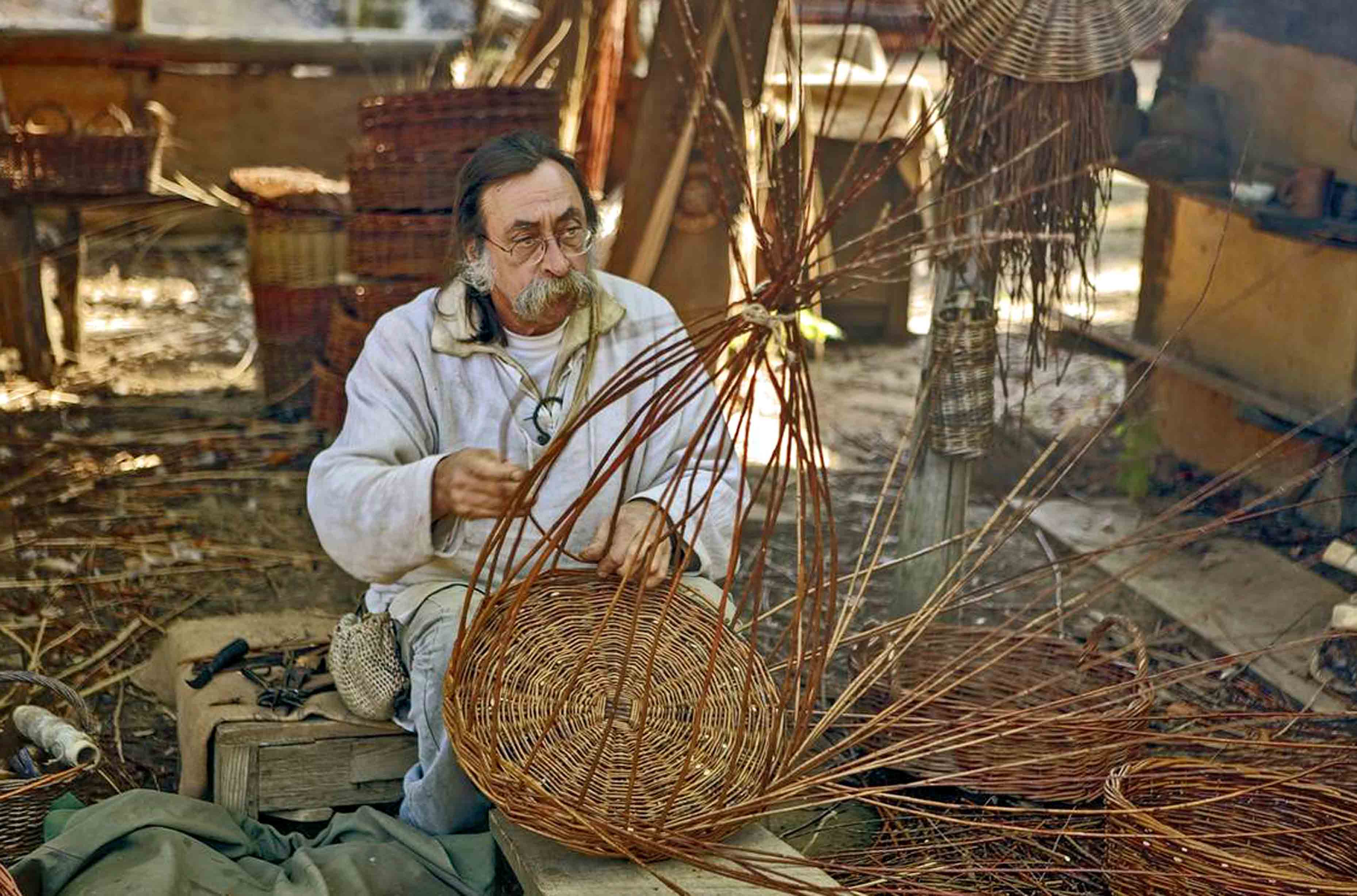
Craftsman at work
My tour of the growing building started in the lord's chamber where it was a revelation to see the intricacies of how cross-ribbed vaulted ceilings are constructed. From it a spiral stone staircase leads to the grand hall on the first floor which was being roofed with 15,000 tiles, all made on site.
Each year there is a clear plan to complete a particular section of the castle, though the site has to close between November and March because mortar freezes in cold weather. Interestingly, in medieval times progress would have been quicker because a lord had unlimited call on the local people.
Guédelon is six miles from St-Fargeau where a spectacular Son et Lumiere show is staged at the chateau every summer. The town also has a music museum, Musée de l’Aventure du Son, with an outstanding collection of early radios and gramophones.
For more information about Guédelon visit www.guedelon.fr
Accommodation in the area includes Hôtel Les Grands Chênes ( www.hoteldepuisaye.com ) and the ‘Il était une fois...un jardin’, a chambres d’hôtes (http://iletaitunefoisjardin.free.fr) in St-Fargeau itself.
You may also like to read
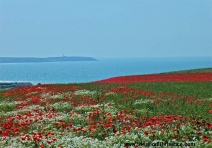
FRANCE - THE OPAL COAST
Europe has many secret jewels for travellers to discover - here are just a few of them.

FRANCE - PICARDY
Tour-smart shows you that there are many amazingly different aspects to travel - this is one of them.

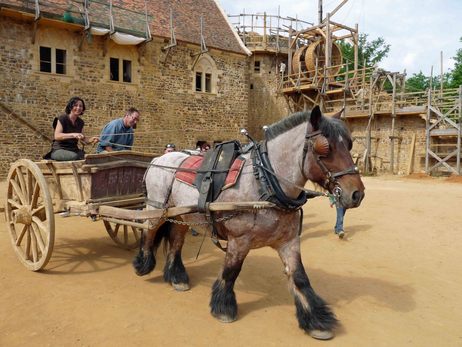

Comments